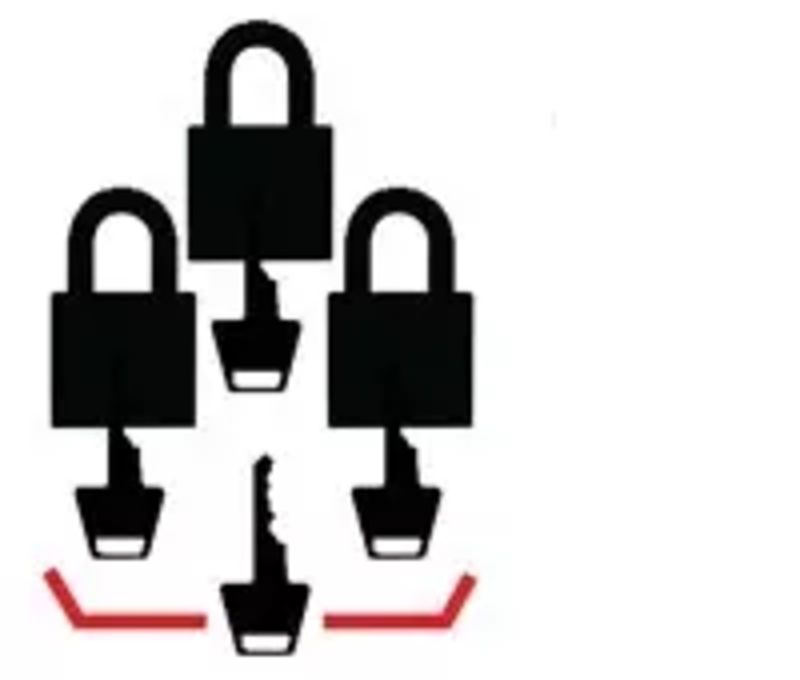Proper Padlock Keying for Lockout:Tagout

The OSHA Lockout:Tagout regulation CFR1910.147 states that Lockout Device is: A device that utilizes a positive means such as a lock, either key or combination type, to hold an energy isolating device in the safe position and prevent the energizing of a machine or equipment
Padlocks, usually combined with a specific type of lockout device such as a circuit breaker lockout or gate valve lockout insure that machinery cannot be in operation during a lockout:tagout situation. In fact a lockout:tagout operation will not begin until all machinery and equipment involved is locked out by the appropriate device and the appropriate lock.
There are basically 3 ways that padlocks are configured for Lockout:Tagout operations.
Padlocks can be set up “Keyed Alike.” In this situation more than one padlock being used has the same key set to open the locks Padlocks can be set up “Keyed Differently.” In this situation a number of padlocks being used have different key sets. So only a key for a specific padlock will open only that padlock and no other. Padlocks can also be set up to be “Master Keyed.” In this case, one or more persons, perhaps the supervisors will a key that will open many if not all padlocks being used, regardless of whether they are keyed alike or keyed differently.
Often times there are many employees involved in a lockout:tagout situation. They include, the people who actually operate the equipment as well as engineers, mechanics and electricians. From time to time, outside contractors may be called upon for specific repairs or refurbishing. With so many people involved in a lockout:tagout situation, and more than one person involved on any specific machine it is important that each employee has their own padlock or padlocks. It also has to be determined if more than one employee should have access to the same padlock or padlocks.
When there are a number of different groups working on equipment, such as engineers, mechanics and the employee assigned to specific equipment, then each group should have their own set of padlocks and those padlocks should most certainly be keyed differently than those from any other group. To help avoid confusion, each groups’ padlocks should have a different color than the other groups. For example, electricians may have RED colored padlocks, maintenance personnel might have YELLOW padlocks and the employees specific to the particular equipment involved may have BROWN padlocks. This makes it easy to understand exactly who is working on the equipment at any point in time. Furthermore, lockout:tagout rules call for all groups to have finished their work before the lockout:tagout operation can be officially ended. And that means that if any group is still working on the equipment, their locks will still be in place and the other groups will be well aware of who is still working on the machinery.
As lockout:tagout operations can take a significantly long time, the supervisor of a group may decide to have a number of employees use the same lock number. In that situation when an employee leaves work when his shift is finished, his lock can remain on the device for the next employee ‘s shift. An employee may also have a several padlocks with the same key number if he is in charge of several pieces of equipment falling within the lockout:tagout situation.
On the other hand there can be a situation where an employee may have several padlocks that open with the same key for his convenience. The supervisor may feel that only that employee is responsible for his specific part in the operation and so his padlocks, while they are keyed alike will be keyed differently from all other employees sets of padlocks.
Other times, the supervisor may determine that it is best that all involved in the operation have only one set of keys for each padlock and that each padlock would be keyed individually. The supervisor who has designated assignments to all groups involved can have a master key for all padlocks. This allows him to open any lock involved in the operation in case of emergency, in case of a lost key or for checking purposes.